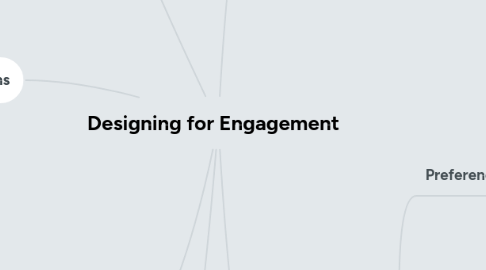
1. Spaces
1.1. Elements of University of Play or your mashup university
1.2. Examples of FLS in Georgetown
1.3. Classrooms which allow options to move around the technology equipments, student's desks etc so students can interact differently based on the theme of the class
1.4. Could constructed environments such as schools provide natural interactions and situations?
2. Institutions
2.1. Predicting and selecting cost-effective spaces
2.2. Is it possible that schools are purchasing content-flexible technology with the hopes that multiple content areas could benefit?
2.3. Changes needed to be more receptive to FLS
2.4. Implementing design principles at scale for better orchestration
2.5. Should the undergrads be allowed to join class remotely?
2.6. Getting rid of obsolete technologies which will become redundant in the near future and replacing them with smart screens and other technologies.
3. Education in US vs other countries
3.1. How can international schools get up to speed with schools in countries that value education more?
3.2. Differences in level and quality of subjects and the way they are taught
3.3. Standardizing educational system for grade schools across the world.
4. Extrinsic and other constraints in orchestration
4.1. Is there a way to make it easier for teachers as designers or even as administrators when talking about these constraints?
4.2. What would it look like to include other extrinsic constraints in an examination of how to design for classroom orchestration?
4.3. Curriculum Relevance is a major constraint for professors as they do not have full control on what they like to teach to the students due to the administration's pressure of school research focus as priority.
5. Multimodal Learning Design
5.1. Could students learn more effectively if they were learning in a multimodal environment?
5.2. How can learning designers find that sweet spot of promoting active learning before the point of cognitive overload?
5.3. Teacher
5.3.1. Without straining the teacher, how much effect can be put in by them to create this ideal blended environment?
5.3.2. How do these (control) tools enact power dynamics within a classroom?
5.4. How can education be analogous for both the remote and in-person learner if technology isn’t integrated with the multimodal class experience to begin with?
5.5. Is it important to split the usage time of technology and classroom learning to avoid overwhelming the students with excessive use of either platform.
6. Technology
6.1. Preferences (like/dislike)
6.1.1. Control
6.1.1.1. How do these (control) tools enact power dynamics within a classroom?
6.1.1.2. How did those technologies give you as a student more control or give your teacher control?
6.1.2. What makes education games more or less engaging?
6.2. Development
6.2.1. In what ways have you seen the technology landscape evolve and change?
6.2.1.1. Impact on learning environment and spaces
6.2.1.2. Have the circumstances changed with the emergence of multiple sharing and conferencing platforms?
6.2.2. Adapting/resisting changes
6.2.2.1. Teachers' adaptation of technology for their curriculum and instruction needs
6.2.2.2. Are teachers aware of how to use tech in learning activities?
6.2.2.3. Are students/teachers skilled enough to operate applications over different platforms and operating systems where they don't have much experience.
6.3. Create a dependency on products, tools, and applications?
6.3.1. Is it important that orchestration and teaching be learned first without excessive use of technology and evolve into further advanced systems of using technology?

